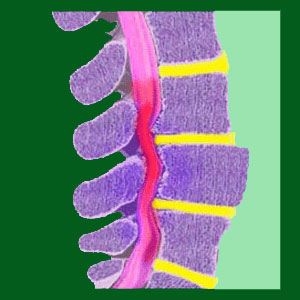
Grade 1 spondylolisthesis is the least clinically significant variety of vertebral slippage and is usually considered a harmless spinal abnormality by doctors. It is crucial to understand that this lowest grade of spondylolisthesis is rarely pathological, but should be monitored in order to make sure that the vertebral migration is not progressing to potentially symptomatic degrees.
All listhesis conditions are graded according to severity and this grading often correlates to their symptomatic potential, as well. In order to better your chances for accurate diagnosis, grading and treatment if necessary, we always recommend seeking care from a qualified neurologist or spinal orthopedic specialist.
This patient guide provides a complete and objective view of spondylolisthesis conditions that are classified as grade 1.We will describe these conditions and define their diagnostic parameters, as well as discuss their prognosis for affected patients.
Grade 1 Spondylolisthesis Defined
Grade 1 listhesis is the mildest form of vertebral migration. In order for the diagnosis to be made, the patient must demonstrate migration of one or more vertebral bones forward or rearward of their objective anatomical normal to a degree ranging between 1% and 25%. This diagnostic span is the largest in terms of multiplier difference between the lowest and highest classifications of spondylolisthesis grading, with a 25% migration being 25x more significant in size than a 1% migration.
Grade 1 listhesis can assume anterolisthesis or retrolisthesis configurations. Grade 1 anterolisthesis is described as forward migration of one or more vertebral bones towards the frontal side of the anatomy with a total migration of between 1% and 25%. Meanwhile, grade 1 retrolisthesis, which is rarer, is described as rearward migration of one or more vertebra of between 1% and 25% from normal anatomical position towards the dorsal side of the anatomy.
Spondylolisthesis Symptomatic Potential of Grade 1
Grade 1 listhesis is mostly considered a harmless spinal abnormality. Most cases do not present symptoms, although in some instances, back pain, sciatica and various other symptoms can be mistakenly attributed to these grade 1 conditions. Remember that misdiagnosed spondylolisthesis is a common occurrence, with many patients being subjected to unnecessary treatment and even contraindicated surgery.
This is not to say that all grade 1 listhesis conditions are completely innocent. Any type of listhesis can cause misalignments in the central spinal canal and foraminal openings. Since spinal stenosis and foraminal stenosis are considered normal and expected due to disc desiccation, osteoarthritis and other factors, some patients with mild grade listhesis may suffer worse expressions of age-related stenosis and a reduction of foraminal patency in focal areas. However, this is not universally observed and many patients never express any symptoms due to their grade 1 listhesis.
Grade 1 Spondylolisthesis Prognosis
Stable grade 1 listhesis is usually of no particular concern. These cases often do not progress and only increase the chances of suffering a worsened version of any spinal trauma by a very small amount. Stable listhesis should still be monitored, but only occasionally during routine health screening. It is of paramount importance that stable grade 1 listhesis patients understand that they are not damaged in any way and should not expect to suffer back or neck pain in the future.
Unstable grade 1 listhesis may progress or might even rectify itself in very rare cases. Unstable spondylolisthesis means that the condition is progressing and evolving. Known cases of unstable listhesis should be monitored regularly to check on their progression. In some cases, very unstable cases might benefit from early treatment ahead of advancing to more clinically significant degrees of vertebral slippage, but this is certainly on a case by case basis. We have seen a few cases of grade 1 listhesis that actually resolved themselves and become stable as a typical spine over time.
Spondylolisthesis > Spondylolisthesis Diagnosis > Grade 1 Spondylolisthesis



